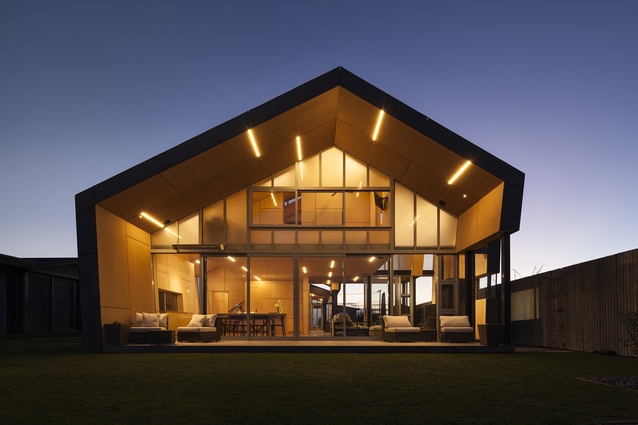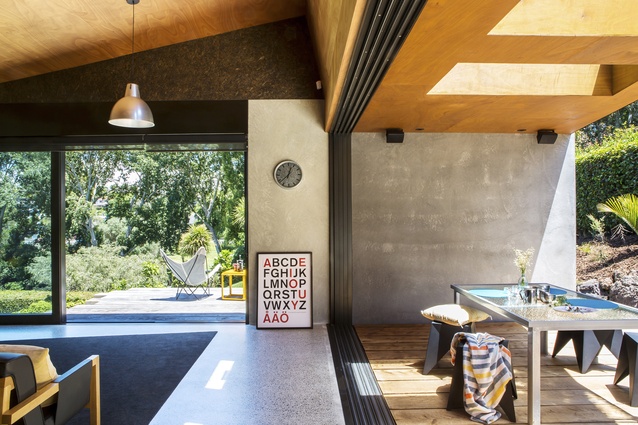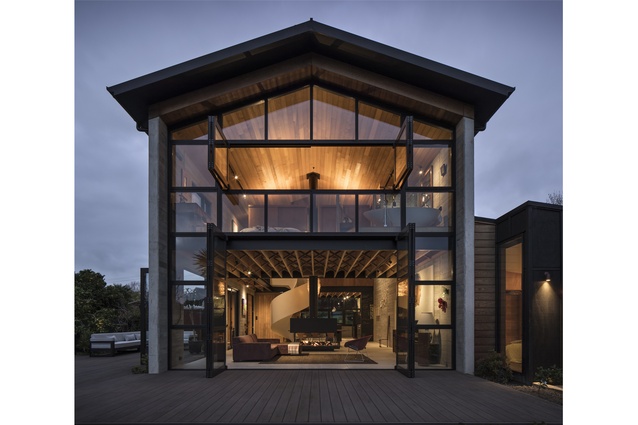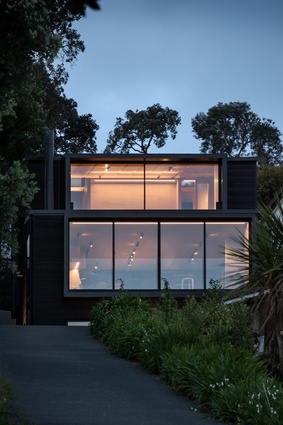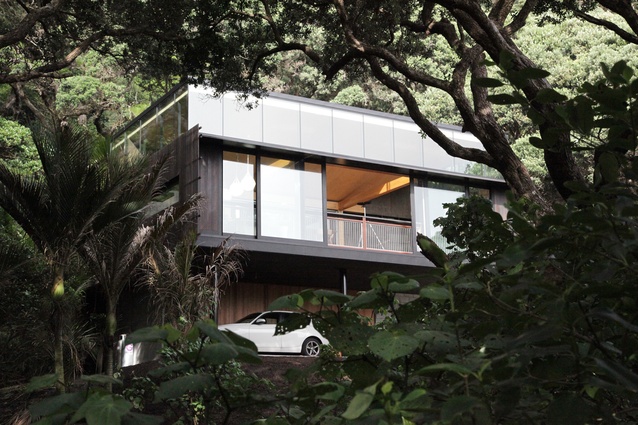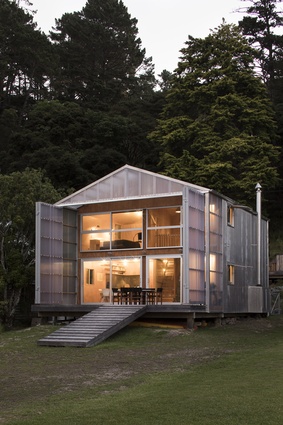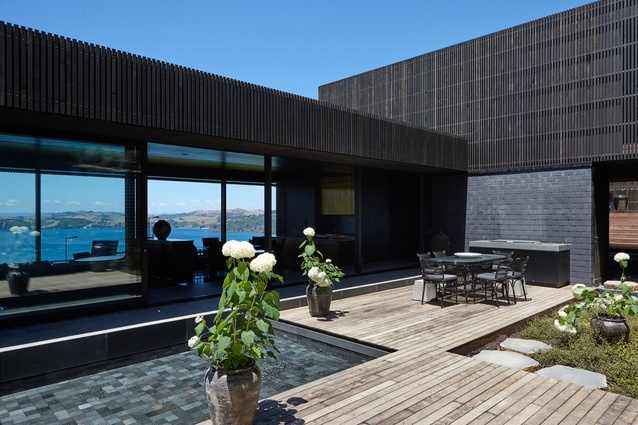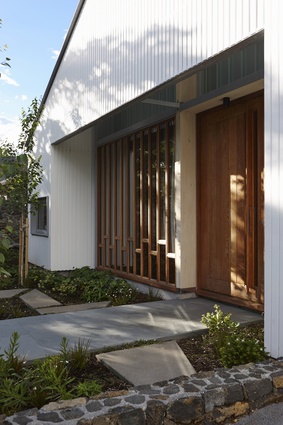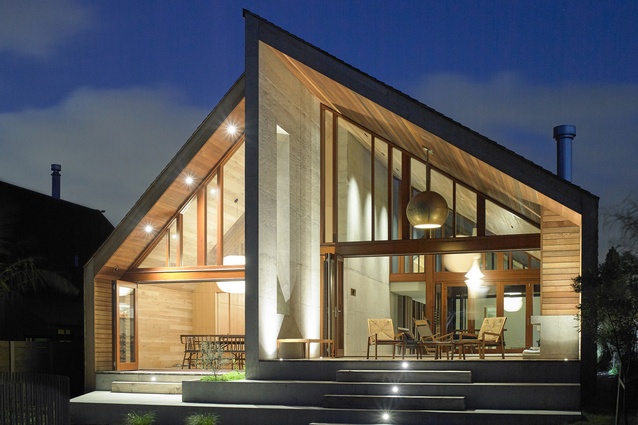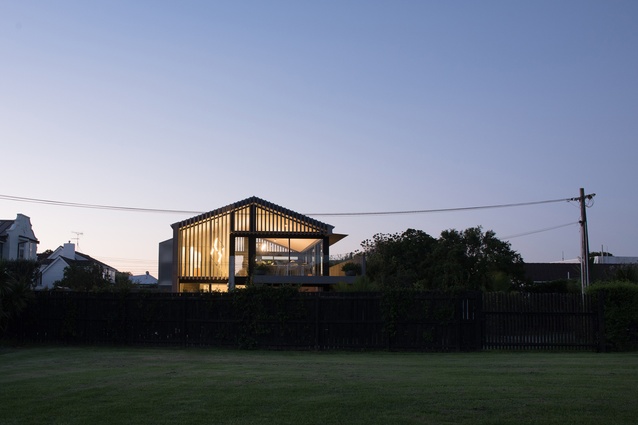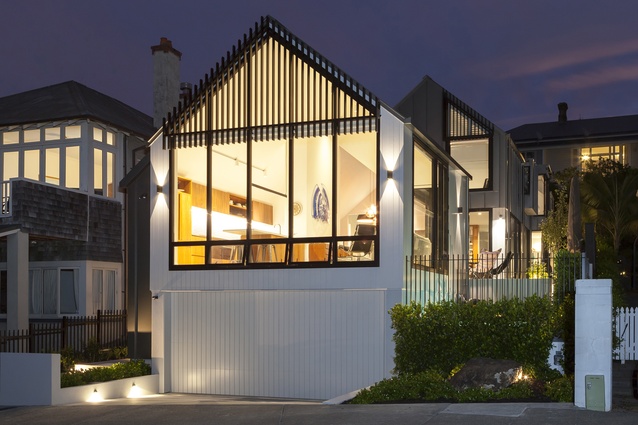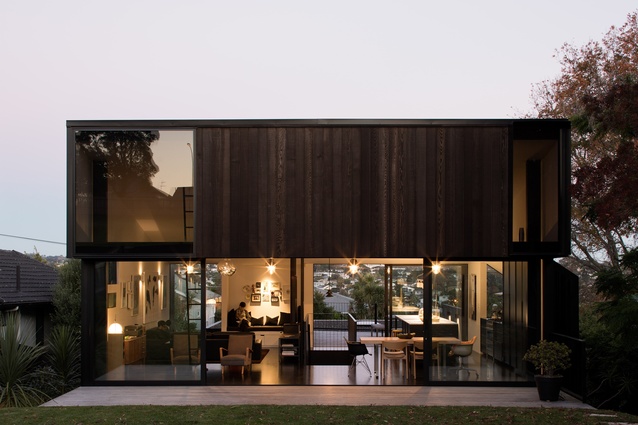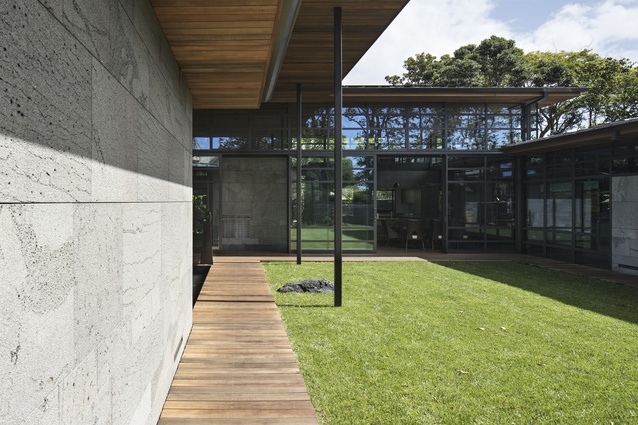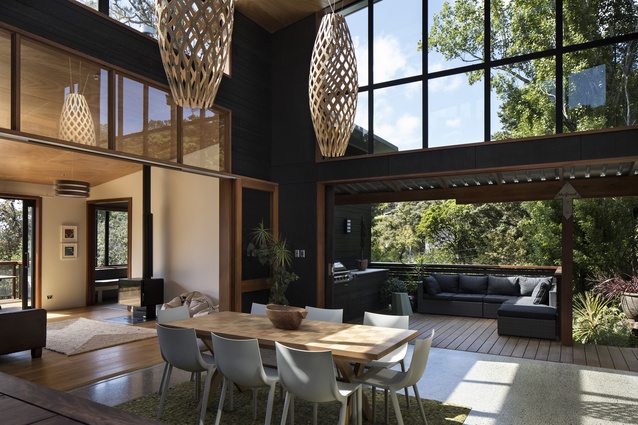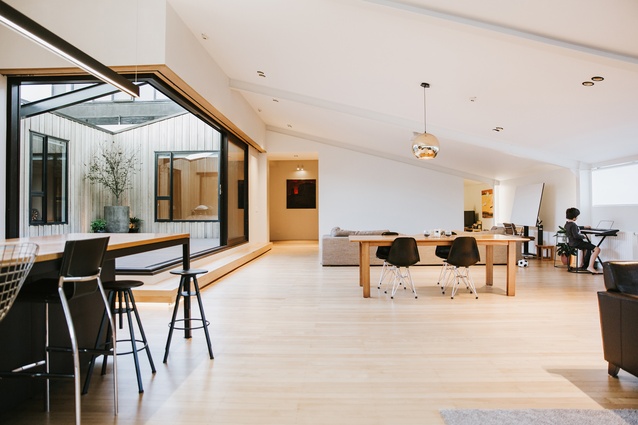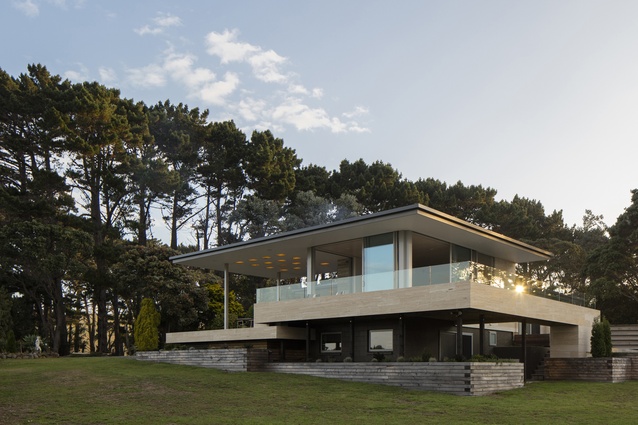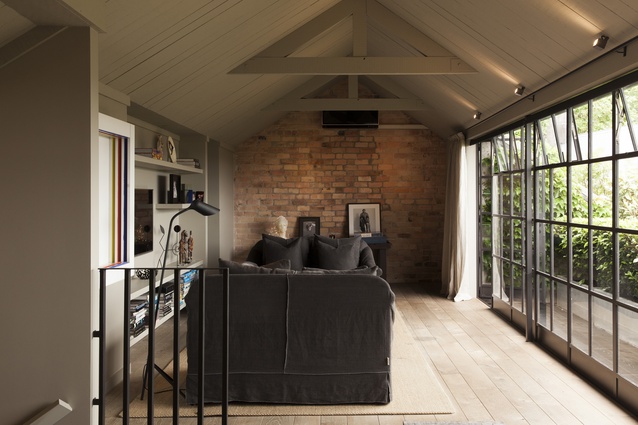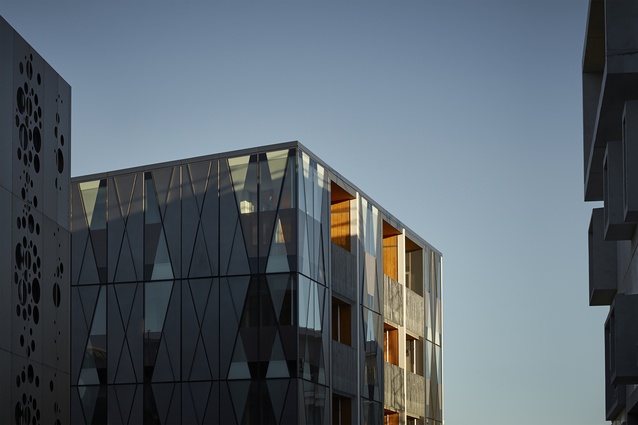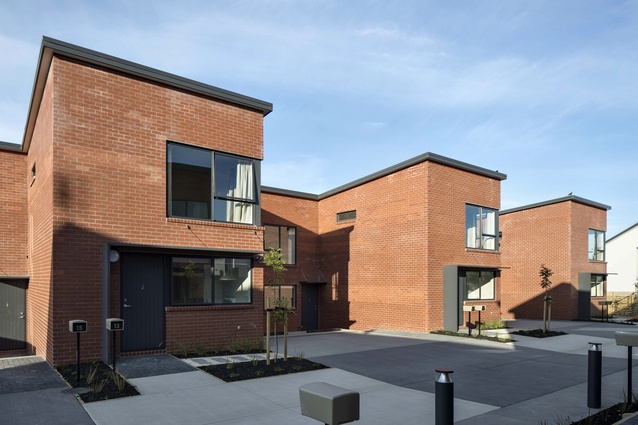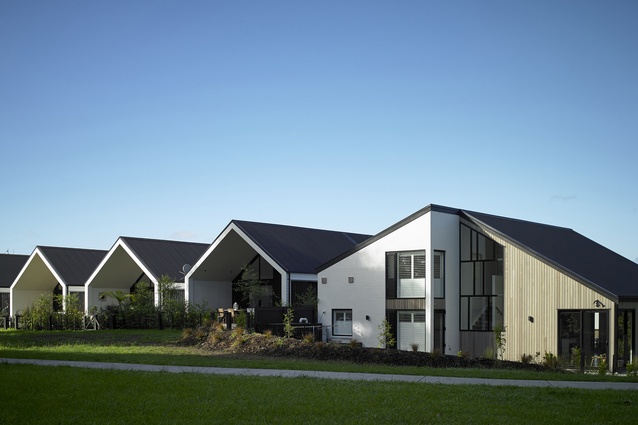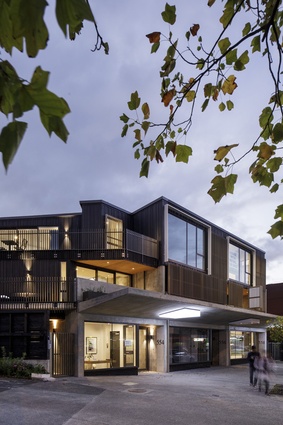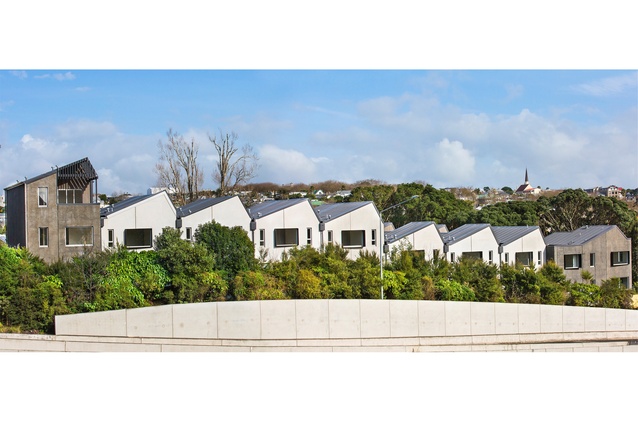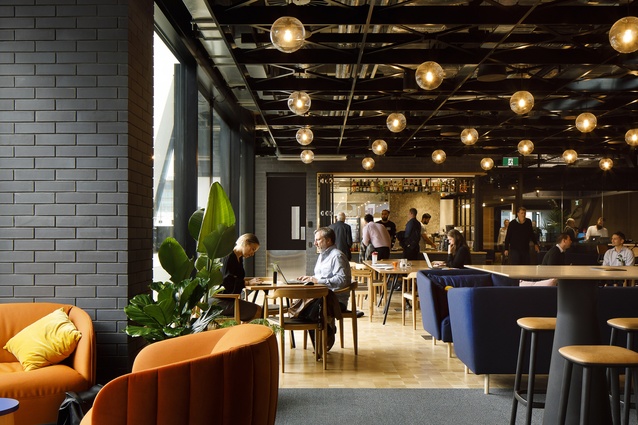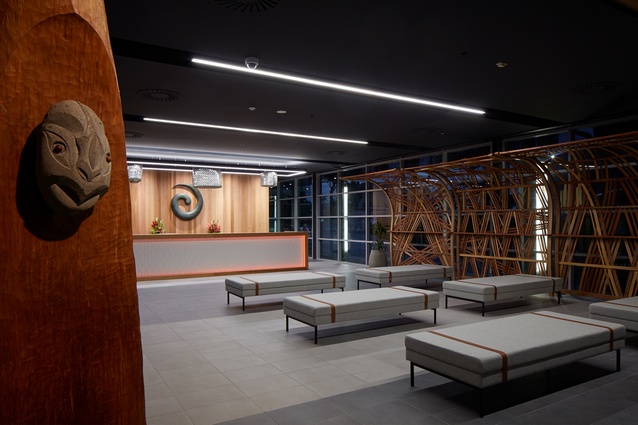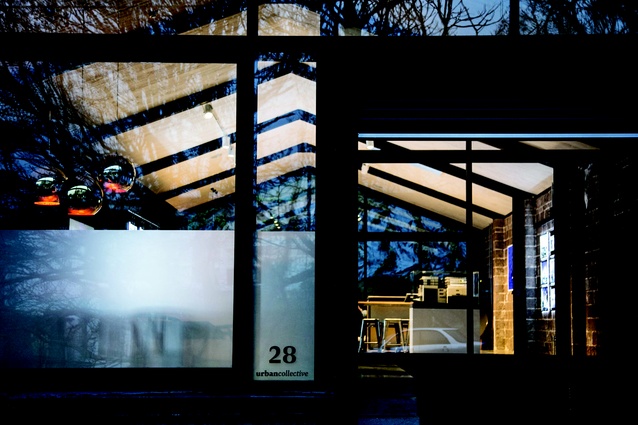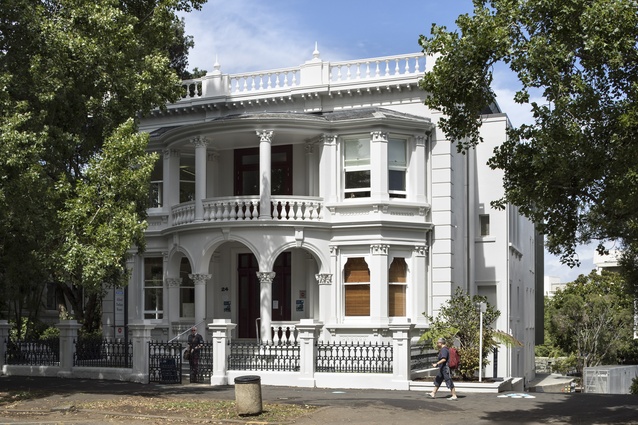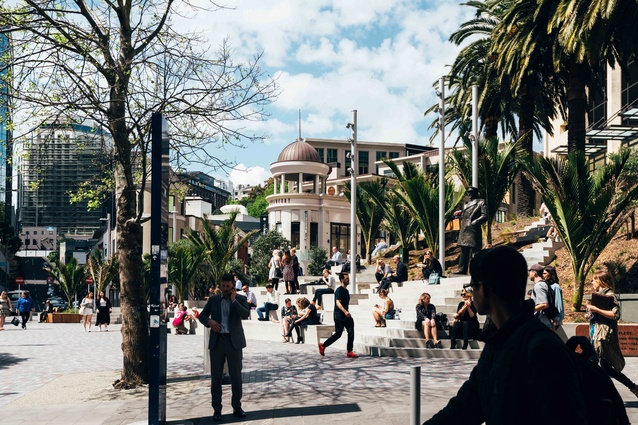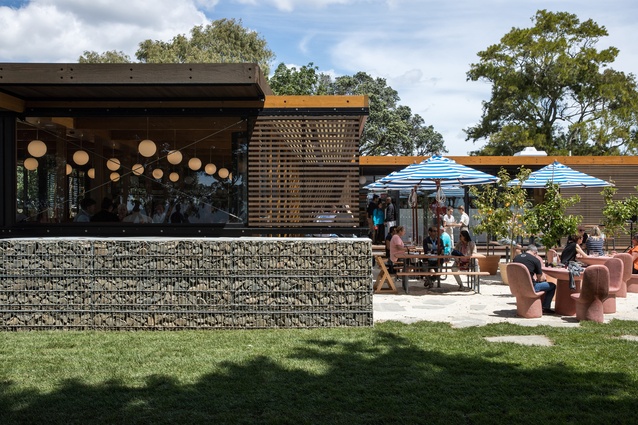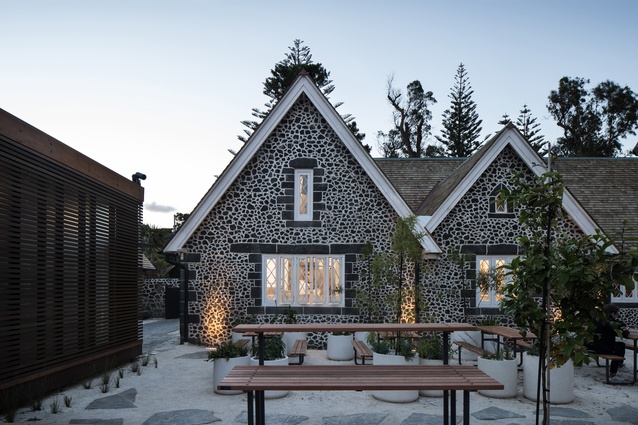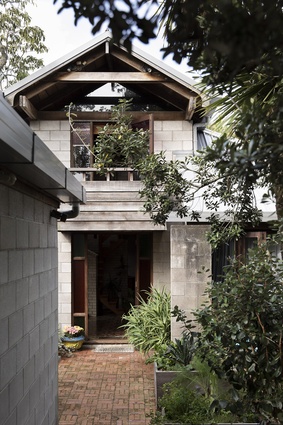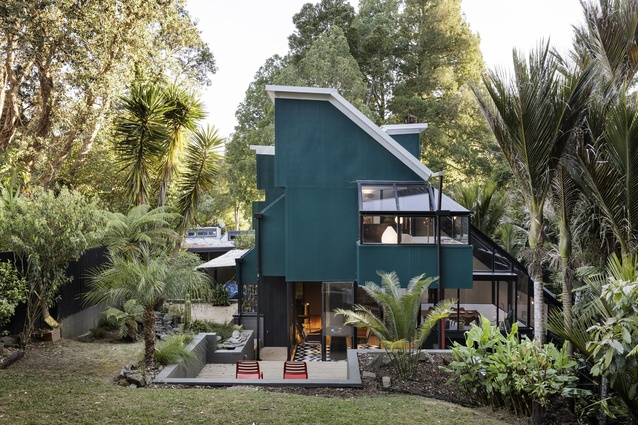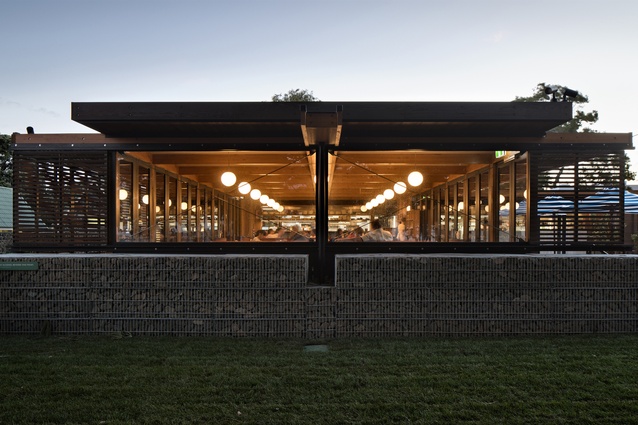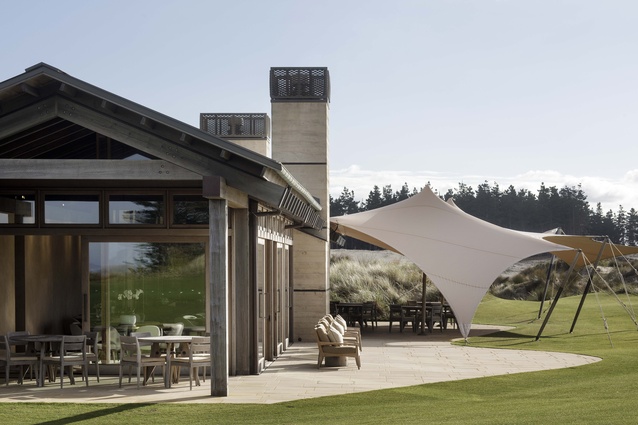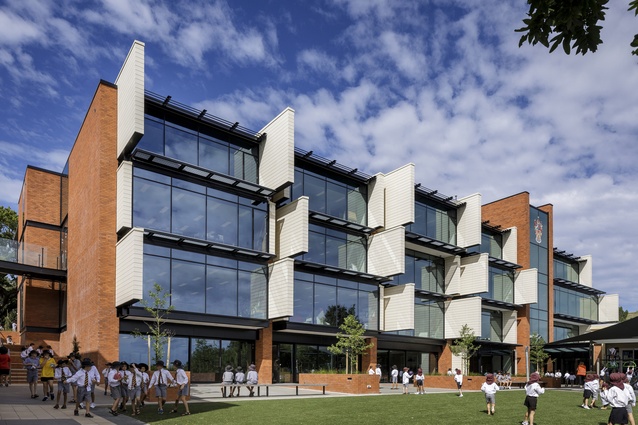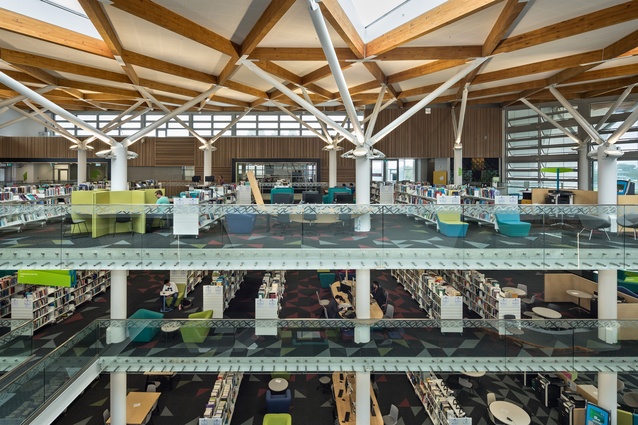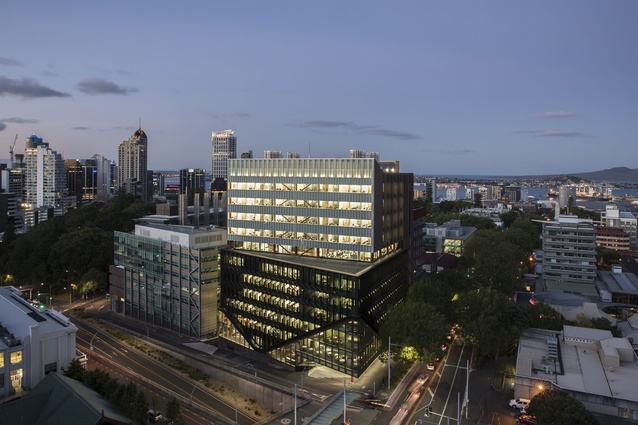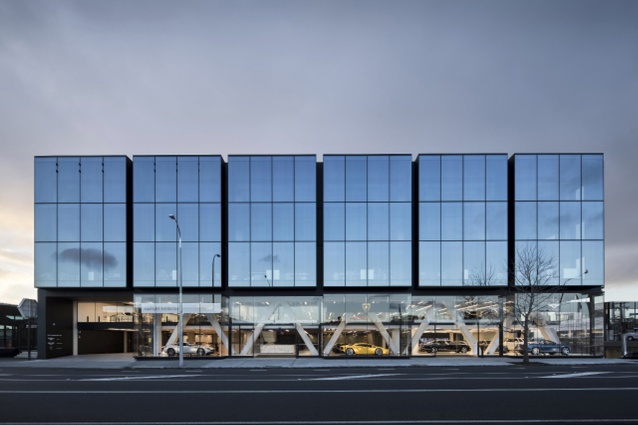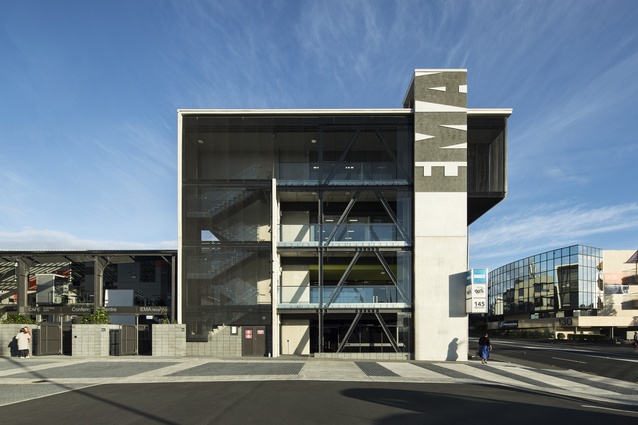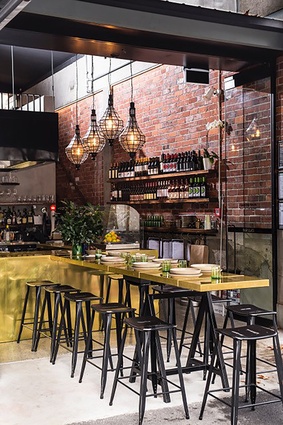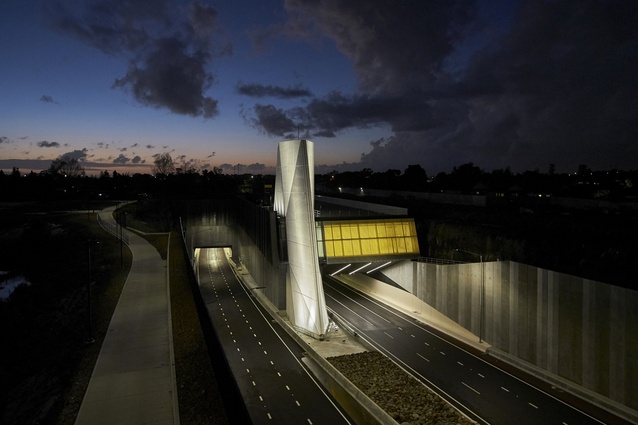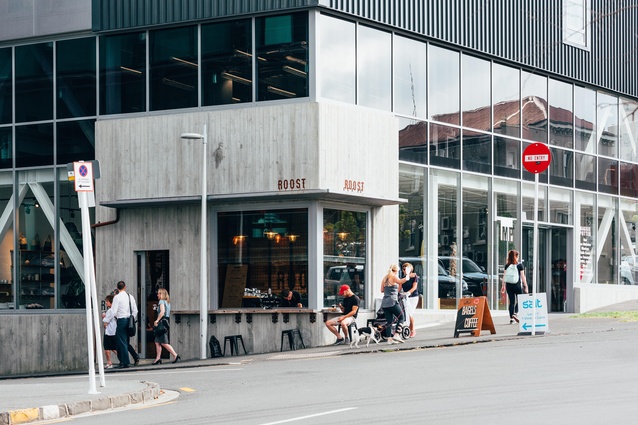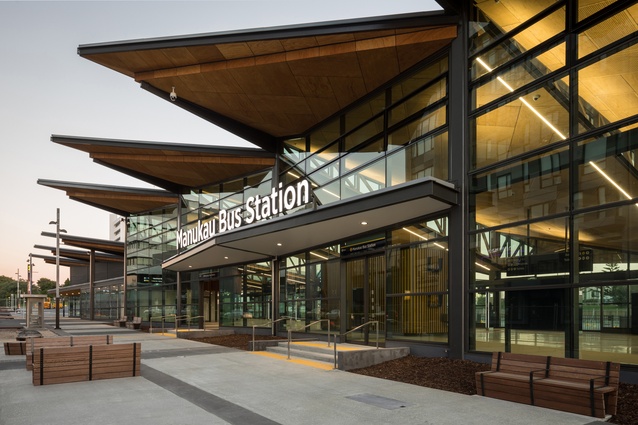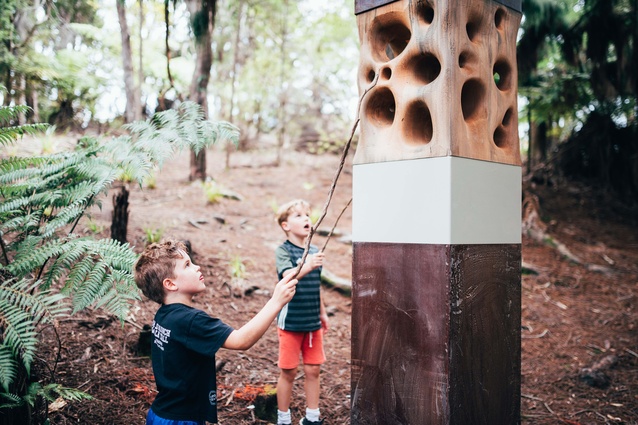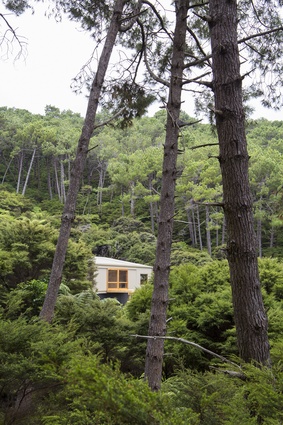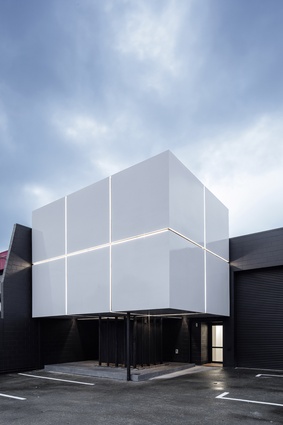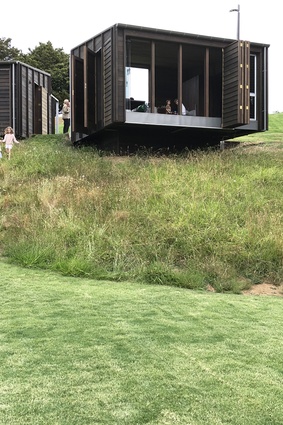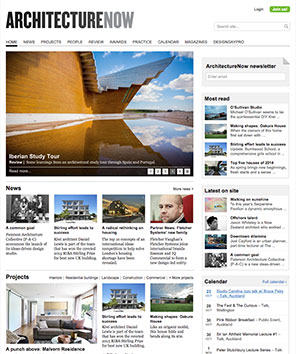2018 Auckland Architecture Awards
The Auckland branch of the New Zealand Institute of Architects announced the winners of the Auckland Architecture Awards on 9 May at the MOTAT Aviation Hall. Rick Pearson was this year’s jury convenor and was joined by architects Jeff Wells, Julian Mitchell and Katherine Dean. Lay juror Fleur Palmer completed the jury. Pearson said the high quality of the shortlisted projects made the jury’s work particularly challenging this year.
Pearson commented, “It was especially encouraging to be able to confer awards to multi-unit housing projects, which has been a skinny awards category in previous years, despite the pressing nature of Auckland’s ongoing housing shortage.”
He continues regarding the Housing Awards, “We gave 14 awards for new housing. The jury recognised projects which created strong connections to coastal sites, and others in more suburban settings, often with strict heritage constraints, where appropriate and inventive solutions have been executed.”
Housing Awards
Fe3O4 by Crosson Architects
Located near a Northland beach, the jury said this weathered steel-clad house was a “richly layered and obsessively detailed building”.
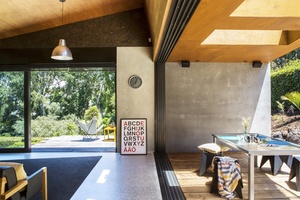
39 Allum St by Dorrington Atcheson Architects
Though the sloping site presented a challenge for this project, the jury commended the designers for responding well with “carefully framed views across a
reserve and intimate garden courtyard spaces”. They continued, “The design, articulate and complex with an unusual plan, achieves calm-yet-rich spatial qualities via a concrete ribbon wall, chamfered spaces, a surprising ‘yellow box’ containing the kitchen and a tonally rich palette of materials.”
Anzac Bay House by Vaughn McQuarrie
The jury praised this house for being fine-tuned to the clients’ needs and creating a space which is lovingly occupied. “This house exhibits a lyrical use of materials and good range of textures within a clearly articulated barn-like form,” they said.
Castor Bay House by SGA Ltd — Strachan Group Architects
This is a house “full of surprises” the jury said, with well-framed views and a complex entrance atrium and circulation. “Throughout this project, there has been rigorous attention to detailing a concise material palette, which is perhaps best illustrated by the adjustable screens that provide privacy, aid ventilation and reveal views.”
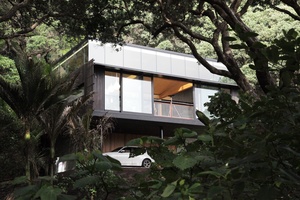
Kawakawa House by Herbst Architects
“[It is an] elevated living platform, designed around an internal courtyard that is totally appropriate for its predominantly pōhutukawa forest setting,” the jury said of this Piha home.
Kawau Island Bach by Crosson Architects
This project was a second win in the Housing category for Crosson Architects which the jury described as “the quintessential bach with a boatshed aesthetic”.
Lantern House Waiheke by Herbst Architects
“Being in this house is like living in a painting. It is texturally rich and tonally coherent throughout, thanks to the use of exotic materials, such as the teak floors and ceilings and herringbone tiled floors,” the jury said. They continue, “This atmospheric quality enhances the painterly way in which we perceive the magnificent views.”
Mount Eden House by Guy Tarrant Architects
The jury commented, “This home, which speaks of the past and of the future, is engaging, well proportioned, light-filled and elegant. It is unexpectedly different yet completely of its place.”
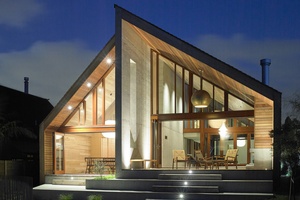
Rawene House by Stevens Lawson Architects
The jury describes this house as being distinguished by ”a sublime series of relaxed and generous spaces organised around a spine wall”. They noted, “The raking roofs and links to courtyards have created a gentle and calming interior atmosphere.”
Reserve House by Geoff Richards Architects
Rigorous Council requirements didn’t stop this house from being successful. According to the jury it “is a quiet and understated modern dwelling overlooking a reserve”.
They said, “With its beachside informality, warm timber materiality and exceptional detailing it is an excellent complement to the surroundings.”
Shipshape by Robin O’Donnell Architects
This Saint Mary’s Bay house has a “façade that reflects the past, while the design takes advantage of the views”. The jury was impressed with the way the Residential 1 heritage constraints for this project were handled by the designers.
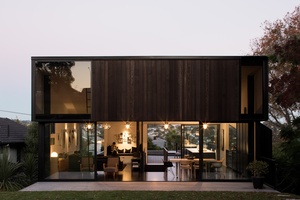
Space Invader by PAC: Paterson Architecture Collective and Glamuzina Architects in association
The house was described by the jury as having “a strongly vertical front-back dialectic – which creates a clever shift between the ground and upper floors – and a distinct relationship to the street”.
“Articulated by a series of stratified planes looking through to interior courtyards, the project is well integrated into a beautiful landscape – including a flat lawn despite the challenges of the sloped site,” the jury added.
Volcano House by Rowe Baetens Architecture
“Tucked away down a discreet right of way, this comfortable courtyard house exhibits a profound calmness. Natural New Zealand materials – basalt from Mt Horrible and tōtara retrieved from rivers in Northland – have been beautifully composed within a clear schema of linked, stone-clad spaces. This is an elegant pavilion perfectly suited to the clients and their collection of art.”
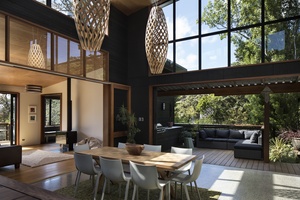
Whare Koa by SGA Ltd — Strachan Group Architects
Commended by the jury for its framing of the views of Opahi Bay, this house also utilised “ingenious technical solutions that blur the interior and exterior space throughout the house”.
Housing Alterations and Additions Awards
Courtyard Loft Conversion by Alignworks
The jury commented, “A plan and design that incorporates an internal courtyard was an excellent response to this repurposing of an existing New Zealand Post warehouse. This is a generous, light-filled living space and sunny, private live-work environment for the occupants.”
Northland Lake House by Rowe Baetens Architecture
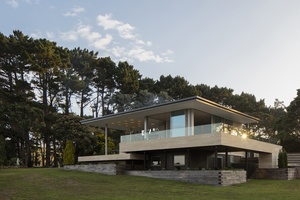
The jury noted the transformative nature of the alterations and additions to this house. “The extensive use of stone is an appropriate showcase for the client’s professional expertise, and a covered outdoor room, top-lit with onyx marble, is a useful and well-used space. Extensive views over the lake have been achieved by raising the new living area platforms above those of the existing house.”
The Stables by McKinney + Windeatt Architects
A Ponsonby conversion from what used to be a small brick stable won praise from the jury as an alteration that is “elegant, restrained and modest in scale.” The jury noted, “This project represents a delicate response to a small site with fantastic use of materials and lovely balance of texture.”
Housing Multi-Unit Awards
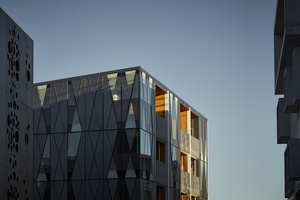
Aria Apartments by TOA Architects
Part of the Vinegar Lane precinct, these apartments “raise the design bar high by meeting the challenge for entry-level housing within a high-density urban development,” the jury commented.
Jennings Jersey by Monk MacKenzie
In this Housing New Zealand project in Mount Albert, density has been achieved in a manner that complements the surrounding neighbourhood in a scheme that is “efficient, economical and textured.”
Sunderland 6 by Stevens Lawson Architects
The jury commends this series of projects at Hobsonville Point for “relating the distinctive building units to their types.” They said, “All three housing types have been well detailed, and are consistent, clear and nicely proportioned.”
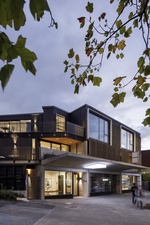
The Barrington by Paul Brown Architects
Located in Grey Lynn, this building is comprised of small tenancies and live-work options. The jury noted, “The two street frontages create dynamically different conditions while maintaining the texture and grit of the neighbourhood.”
The Foundries by Jasmax and Hunter Hindmarsh in association
The project was challenged with a location bordering a motorway, but the jury described it as a “handsome solution to urban residential intensification on a mixed-use site.”
Interior Architecture Awards
119 Great North Road by Warren and Mahoney Architects
A winner of two awards this year, this building thoroughly impressed the jury inside and out. “The exposed steel and concrete beams and concrete trusses evoke the modern industrial genesis of automobiles, and sleek surfaces complement the cars’ sculptural forms,” the jury commented about this luxury car showroom and office building’s interior.
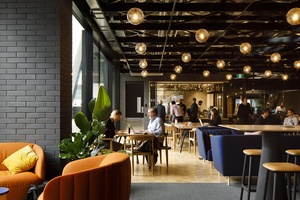
GridAKL Innovation 5A (12 Madden) and Mason Bros by Jasmax
The jury described this co-working facility in the Wynyard Quarter as a “vibrant working environment that promotes inter-business interactions.”
Māori Television by RCG Limited
The jury gleaned from their visit to this workplace that it was much loved by its inhabitants. “The te aho tapu (sacred first thread) approach is evident in the use of carefully crafted materials, commissioned artwork and the sophisticated organisation of the interiors,” they said.
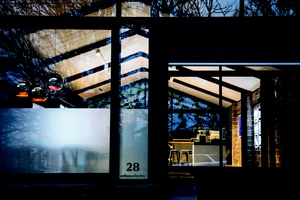
The Boys by Brave Architects
The jury noted that this project has “cleverly integrated old with new so that a memory of the building’s previous life was retained.” The result was a “polished transformation of a once-grimy inner-city warehouse” into spaces suitable for showrooms or apartments.
Heritage Awards
Alfred Nathan House by Architectus and Salmond Reed Architects in association
One of two wins from Architectus this year, this building at the University of Auckland was commended for a design which “accentuates the richness of the original features of a building that dates back to 1882.” The restoration included an addition to the rear and seismic upgrades.
Ellen Melville Centre and Freyberg Place by Isthmus Group and Stevens Lawson Architects in association
This project included both a restoration and landscape component which the jury described as “excellent in the way it generously opens the building up to the community.”
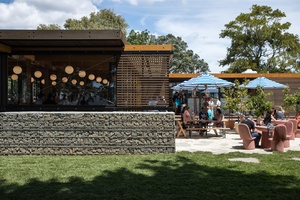
Mission Bay Pavilion by Herbst Architects and Salmond Reed Architects in association
The restoration and strengthening of the 1858 Mission Building earned these firms a Heritage Award. The new structure includes a restaurant which has also won a Hospitality Award. The jury said of the refurbishment, “This former Missionary building has been sensitively refurbished, with seismically upgraded stonework and floors and roof shingles and other elements replaced. As a result, the chapel has been transformed into an elegant, light-filled space that works well as a community facility.
Enduring Architecture Awards
Campbell Courtyard House (1972) by Stanish and Withers
“This intimately scaled townhouse has continued relevance as Auckland seeks contemporary urban intensification,” the jury said. “[The] design is sympathetically integrated into its heritage context, and is a celebration of layered details between brick, concrete and glass.”
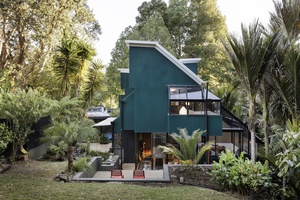
The Green House (1977) by Claude Megson Architect
“Cleverly restored by its new owner to reflect Claude Megson’s initial design intent, the transformation of the house has included the removal of pink glitter from Spanish arch partitions, the reinstatement of vertical links and the addition of a carefully curated colour scheme to highlight the buildings inherent sculptural qualities. Like stepping into a three- dimensional Mondrian painting, the architecture of the house dramatises the vertical links between each space, while small brightly coloured inglenook windows spill jewel-like light into interior spaces that directly link to the steep, bush-clad site,” the jury commented.
Hospitality Awards
Mission Bay Pavilion by Herbst Architects
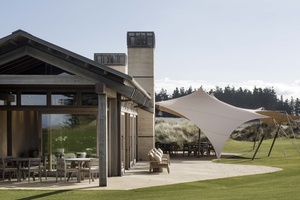
This lightweight and transparent building was designed around the archaeologically sensitive site next door. “It touches the ground only gently, and acts as a visual counterpoint to the weight of the adjacent Mission building,” the jury said.
Tara Iti Clubhouse by Cheshire Architects and Herringbone Design (USA) in association
This Northland clubhouse was praised by the jury. They said, “Refreshingly restrained and intimate, the clubhouse nestles into the landscape, aided by a limited palette of immaculately detailed materials.”
Education Awards
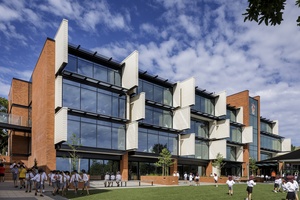
King’s School Centennial Building by Warren and Mahoney Architects
The jury said the design of this building has “clearly articulated the desire for a learning environment that would create a positive pedagogical impact.”
Unitec The Hub — Te Puna by ASC Architects and Design Group Stapleton Elliot
The jury described this as a “polished and assured” building and an “excellent conversion of what was once a windswept courtyard into a comfortable gathering space.”
The University of Auckland Science Centre Building 302 by Architectus
This building “successfully achieves an animated series of spaces that include advanced science labs, specialist teaching facilities and social gathering areas to establish a strong gateway and connection to the rest of the University,” said the jury.
Commercial Architecture Awards
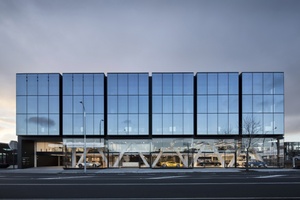
119 Great North Road by Warren and Mahoney Architects
The jury described this building, also a winner of an Interior Architecture Award, as being “all about cars.” The judges were impressed overall with its “flawlessly organised integration of activities and services.”
EMA Business Hub and Carpark by Avery Team Architects
This Khyber Pass building is a “strong response to one of the toughest streets in the country,” the jury said. The project was praised for its “bold and pragmatic materials” and “generous outdoor spaces” which ensure a good connection with its environment.
Faraday Street Precinct by Fearon Hay Architects
This old brick warehouse in Parnell showed a “gentle touch and deep respect,” said the jury. “It has radically transformed this area and created a dynamic series of spaces to in which to work, shop and eat.”
Planning and Urban Design Awards
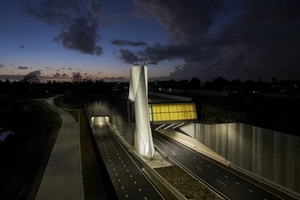
The Waterview Connection by Warren and Mahoney Architects
This project was a response to growing pressure on Auckland’s infrastructure and the jury commended it for its, “sheer grandeur.” Of particular note was Te Whitinga, the Hendon footbridge, of which the jury said, “[It] successfully and dramatically stitches back together a community that had found itself on either side of the motorway.”
Vinegar Lane by Isthmus Group
Jury convenor, Rick Pearson commented, “We were impressed with the planning of Vinegar Lane in Ponsonby. It sets a good precedent for other areas looking to achieve urban density and diversity without forgoing building quality.”
The jury was impressed with the precinct’s “back to the future concept of small, defined development lots, with a focus on architectural quality throughout.”
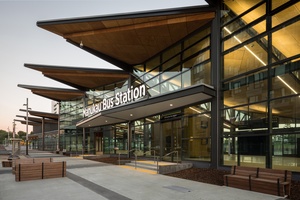
Public Architecture Award
Manukau Bus Station by Beca Architects and Cox Architecture in association
An infrastructure project ”where culture and function are integrated so that the architecture is meaningful as well as cleverly planned, impressed us,” Rick Pearson noted.
“From the metaphor of a kite has been created a lovely, light, floating structure,” the jury added.
Small Project Architecture Awards
Habitat Markers by Isthmus Group
The jury called this project “deliciously tactile” and described it as engaging the natural environment “of Te Ara Manawa through the creation of a series of inhabited markers, mata, which encourage the eye to see.” They also noted, “The use of colour associated with the different elements and fauna, such as clouds, sky and eels, is exemplary.”
Motu Kaikōura Lodge by SGA Ltd — Strachan Group Architects
“This project represents a generous investment in supporting community engagement and
training women architects in construction processes in partnership with Architecture and
Women New Zealand. The building required the development of a clever modular system to enable it to be prefabricated, delivered to the remote island site – via helicopters and barges – and finally constructed. The resulting building is a clear and simple gathering place for a deserving community,” the jury said.
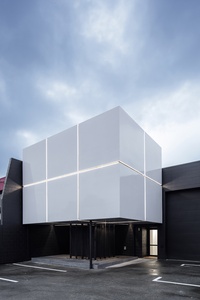
Objectspace Gallery by RTA Studio
The jury said of this Ponsonby gallery, “This functional gallery and series of meeting spaces have been achieved under a tight budget and an even tighter time frame. Loved by the technical staff, this project has been successful in enhancing the commercial viability of the gallery’s operation while providing a range of scale in the flexible exhibition areas.”
The Camp by Fearon Hay Architects
Described by the jury as, “Sublime, rich, intense…like dark Swiss chocolate,” this project responded to a large site delicately but with a rigorous approach to materiality and detail. “The solid louvred panels have an elemental effect in lighting and ventilating the interiors and connecting the inhabitants to the environment beyond.”
All winners of the 2018 Auckland Architecture Awards are eligible for shortlisting in the New Zealand Architecture Awards, which will be decided later in the year, and announced in November.

